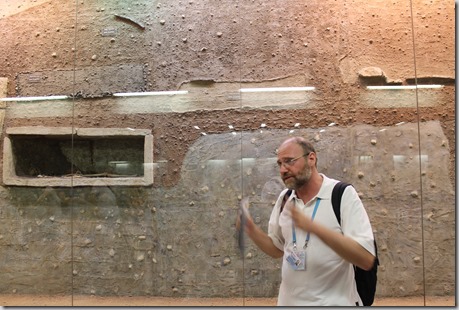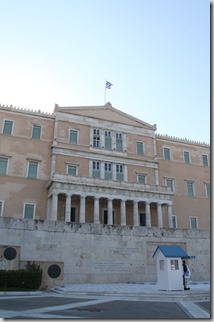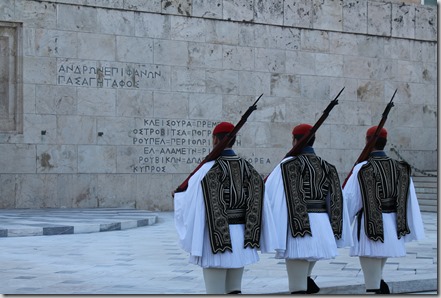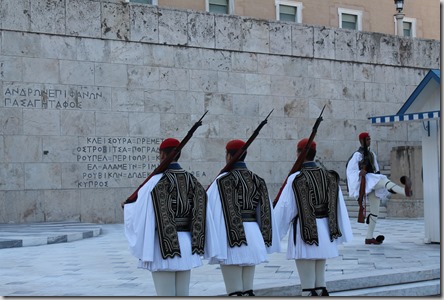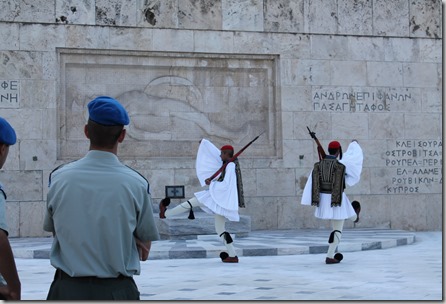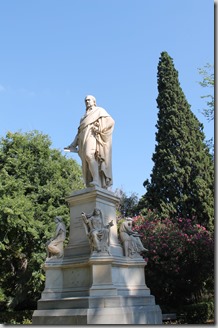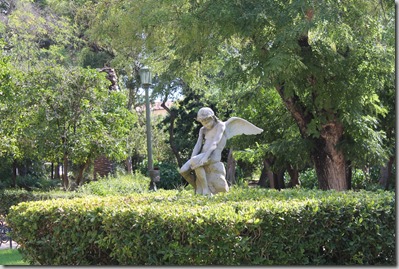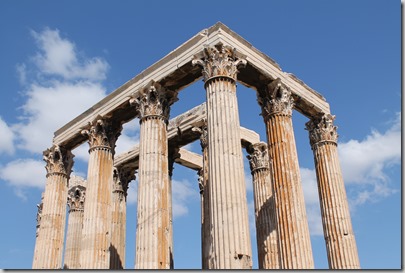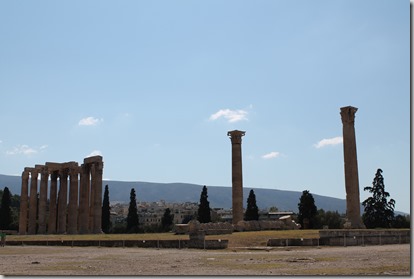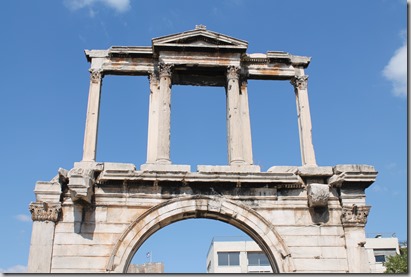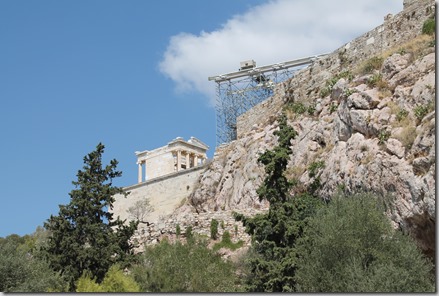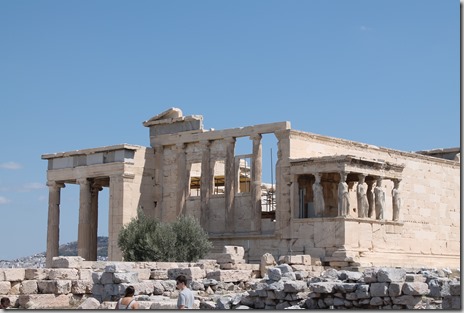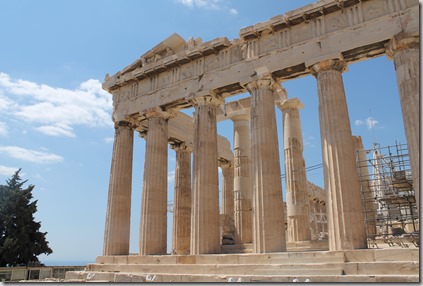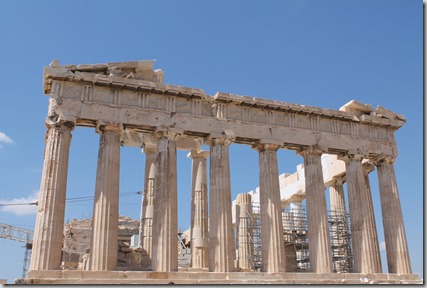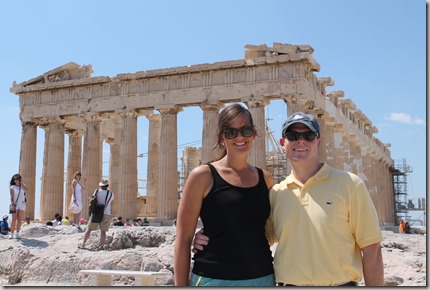One of the highlights of our trip to Greece was definitely our walking tour of the Acropolis. We booked our tour with Athens Walking Tours and had such a great experience that I took an Athens food tour with them the following day. Our guide, Aristotle, has a degree in archeology and still participates annually in a number of digs across Greece. He was fantastic and related dozens of interesting stories along our route.
The tour started with the changing of the guards at the Athens Old Royal Palace. The Palace was commissioned for King Otto of Greece and was completed in 1843. It was originally the Royal residence for the monarchs of Greece but after suffering fire damage in 1909 was effectively vacant until a long period of renovation that turned it into the seat of the Greek Parliament. The troops in front of the building guard the monument to the unknown soldiers of Greece and there is always a pair of troops on duty 24 hours a day, 365 days a year.
We then walked through the National Gardens on our way to the first ancient site, the Temple of Olympian Zeus. This temple, dedicated to the King of the Olympian gods, has quite an interesting history. Construction was started in the 6th Century BC but it wasn’t completed until the 2nd Century AD during the reign of the Roman Emperor Hadrian. During Roman times, it was renowned as the largest temple in Greece. Though only fifteen columns remain standing today (with a sixteenth on the ground), the temple originally had 104 columns 17 meters high. With just a little imagination, one can understand the original majesty of this temple.
After walking through Hadrian’s Arch, we headed toward the Acropolis, which is still to this day a prominent feature of the Greek capital. The Acropolis is the site of many historically and architecturally significant ruins, the most famous of which is the Parthenon. There is some evidence that the hill has been constantly inhabited since the 4th millennium BC but the most important structures were built during the 4th century BC.
The first stop on our path up the hill was the Theatre of Dionysus, the ancient center for the festival of Dionysus. Dionysus was the Greek god of wine and the festivals in his honor led to the development of Greek theatre. The Theatre of Dionysus is one of two theatres on the south slope of the Acropolis and during ancient times it could sit up to 17,000 people.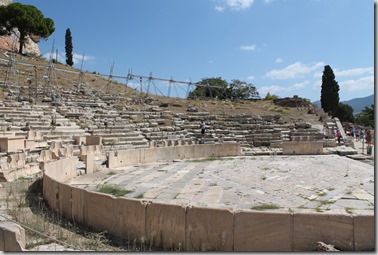
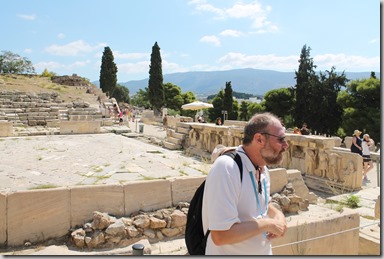
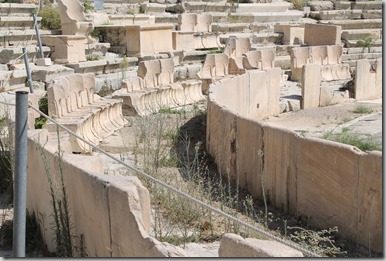
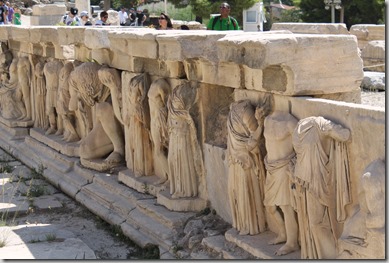
After the Theatre of Dionysus and a brief stop at the Odeon of Herodes Atticus (another theatre that has been restored and is still used to this day), we headed up the slope, past the Temple of Athena Nike and to the Propylaea, the grand entrance to the temple complex. During the middle ages, many changes were made to reinforce the defensibility of the hill. Those changes were demolished over time in an effort to restore the site to its ancient look.
We then walked into the temple complex and headed to the Erechtheion, a temple dedicated to both Poseidon and Athena. The most iconic feature of this temple is the north porch, also known as the “Porch of the Maidens”. It features a series of six caryatids, or robed female figures as supporting columns. The five that are on the site are copies as the originals are now in museums. Five are in the Museum of the Acropolis and one is in the British Museum in London (a matter of a bit of controversy as it was taken by Lord Elgin in 1801 to decorate his Scottish mansion).
Our final stop was the Parthenon, definitely the most famous of all the buildings in the complex. It was constructed between 447 BC and 438 BC and is considered the pinnacle of the Doric order. It is currently under a process of selective restoration by the Greek Ministry of Culture. I wont go into detail here about the architecture (though I think we may have spent an entire class on it in my college History of Architecture I class). However, a few interesting facts about the history seems warranted. Like many temples in the Roman Empire (e.g. the Pantheon) it was converted to a Christian church and became an important pilgrimage site in the middle ages. After the Ottoman invasion in 1458, the Parthenon became a mosque. I found what we learned about its destruction to be particularly interesting. In 1687, the Venetians launched a campaign against Athens and bombarded it. To defend the city, the Turks reinforced the Acropolis and began using the Parthenon as a powder magazine. Then after a Venetian mortar round pierced the roof, the entire powder store exploded and effectively destroyed two-thirds of the building. After that, the building succumbed to a lack of structural integrity.
Now I’m assuming that most people who go to Athens for the first time visit the Acropolis, but I would highly recommend a proper tour. The visit was a hundred times more meaningful with our guide Aristotle.
What is your favorite historical site that you’ve visited?

